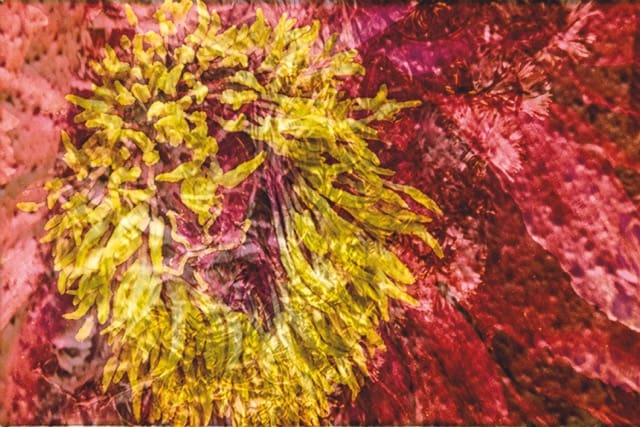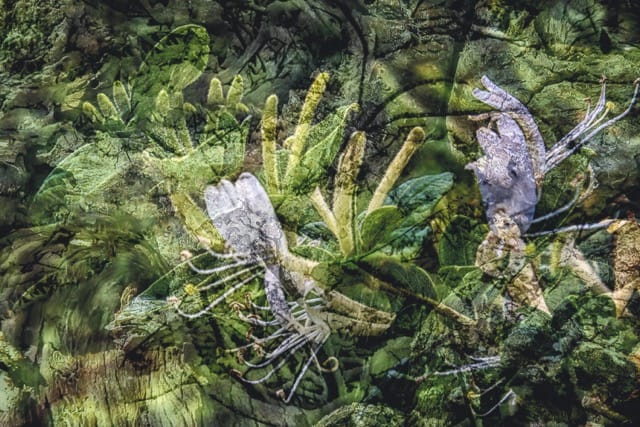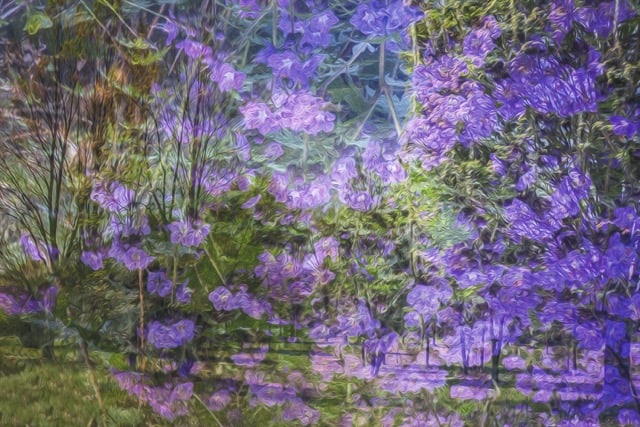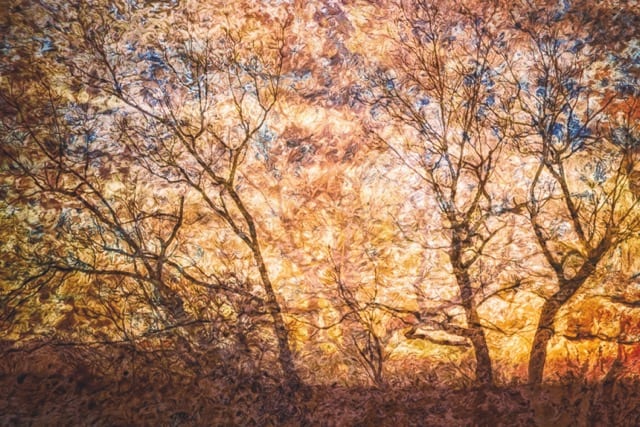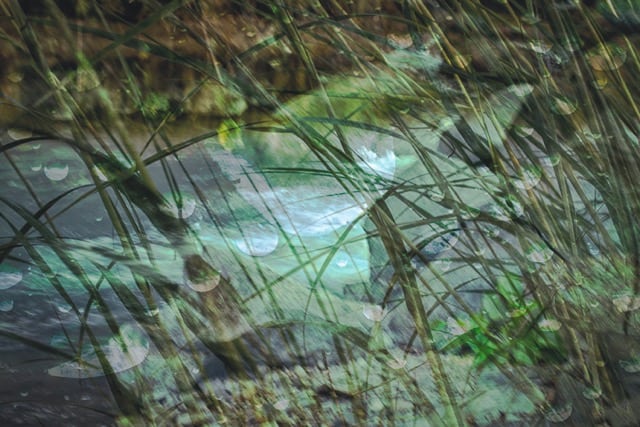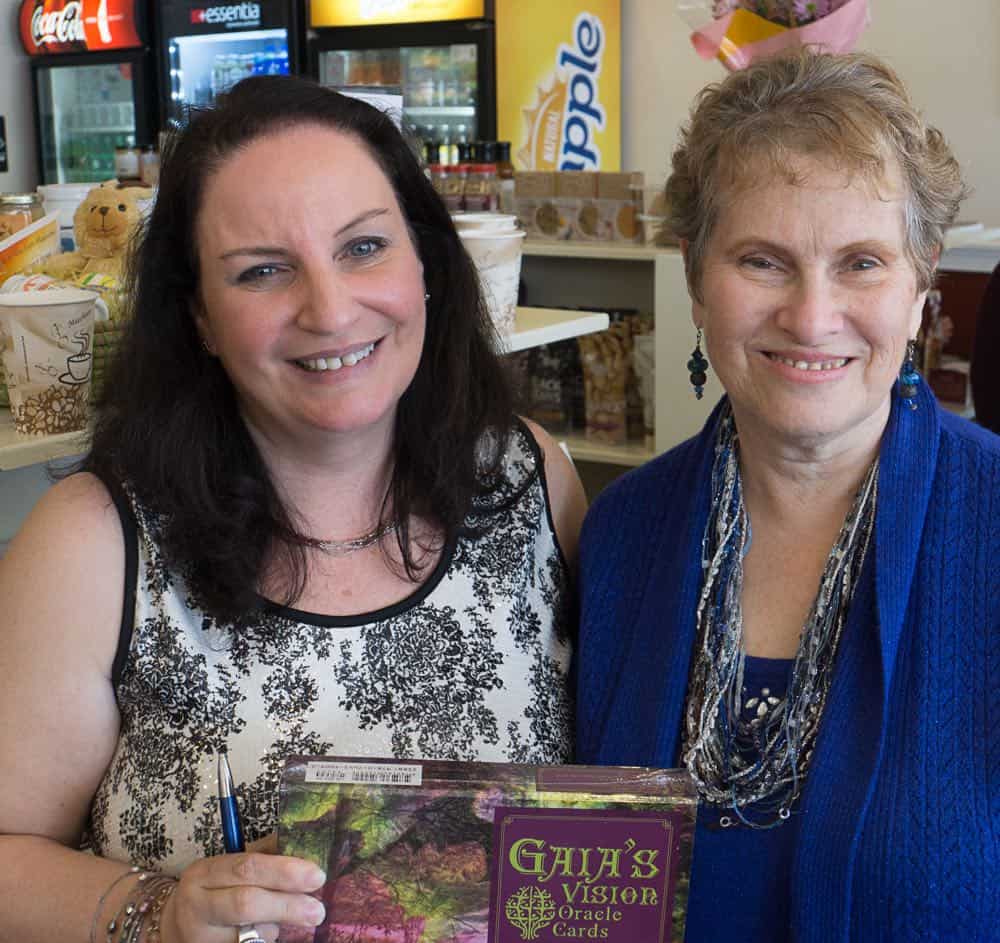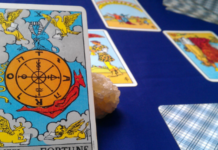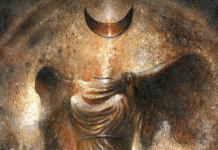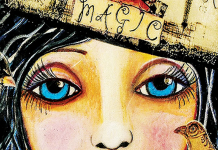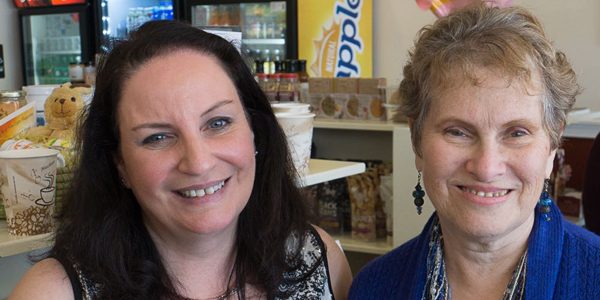
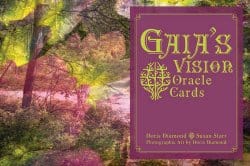 I sat down to chat with Doris Diamond and Susan Starr about how the processes for creating Gaia’s Vision Oracle Cards, an oracle that was released by Schiffer Publishing in February 2016.1
I sat down to chat with Doris Diamond and Susan Starr about how the processes for creating Gaia’s Vision Oracle Cards, an oracle that was released by Schiffer Publishing in February 2016.1
Doris Diamond is a photographer, and she teaches workshops on tarot, divination, personal growth, and Earth-honouring spirituality.
Susan Starr is a writer, editor, reiki practitioners, certified holistic health coach, and, full disclosure, she is a regular contributor to Spiral Nature. You can find her on Twitter as @Coach_Starr.
Psyche: Congratulations! Gaia’s Vision is a lovely deck. I’ve been doing one-card readings for people on Instagram. It’s a great way to test decks, and people have been enjoying it, which is cool to see.
The deck’s images, originally photographs, are abstracted and changed. They remind me of magic eye pictures. How did that come to be?
Susan Starr: I think that’s a question for you.
Doris Diamond: The photographs are layered, one image on top another. I would keep playing until a combination of images caught my eye, said something to me, and then I’d work with that one. There was a lot of trial and error. A lot of playing.
How did you come up with this particular aesthetic for the cards?
DD: It’s a wonderful synchronicity. I had planned to do a book using this kind of photography. I showed the book to a publisher, Schiffer Publications, one of their representatives, and he said he’s not interested in the book, but why don’t I try to get a proposal for an oracle deck? I loved it. At that point I knew I needed an author. So I told Susan about it, and she got really excited. We became a team.
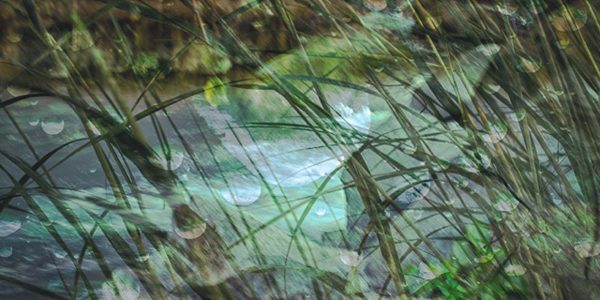
Was an oracle deck something that you’d ever considered creating before? Is that a part of your practice?
DD: I’ve been reading tarot cards for about 20 years, working with oracle decks. I never imagined myself doing one, but as soon as the idea came from the publisher, it just felt right. So, I went and said yes.
SS: I actually had a kind of premonition about six years before this happened. I felt a deck coming, but i didn’t know. I’m not an artist, I’m a writer. So I said, well how could this come about? Because at that point I didn’t know any artists or photographers that were interested in doing it. So it went to the back of my mind, and then this happened with Doris. We were at a friend’s house, and she told the story about the Schiffer rep, meeting him, and she said the opposite. She said, “I need a writer,” and I said, “Well, here I am!” That’s how it really came about. It was very odd. Very odd. Very all synergistic, just like she said.
Did you know each other well beforehand?
S: Oh, yes.
DD: Same spiritual circles.
SS: At least a dozen years, probably more. I’ve been a student with her for tarot, learning her methods of reading. We’ve worked together for a long time on that. I’m nowhere near as good a reader as she is. It was really interesting, the process of making the cards.
DD: It also really came together very magically, because I was not into photography until five years ago. I was doing a tarot class on manifesting our dreams using tarot cards, and the goal that I had to become a better photographer. I worked using tarot spreads, and I kept taking the steps to learn new things with the photography.
You touched on the process, what was it like to collaborate on a deck like this, and creating the book?
DD: It worked really well. I liked working with her because she had great ideas, and soon as I started seeing some of the names she came up with for the images, it was like: wow. These are fabulous. It was really good, because we give each other deadlines. Ok, we need to meet in two weeks and get this much done. That spurred me to have it done, because we were responsible to each other.
S: It really helped me a lot. It took two years to do this from when Schiffer gave us the contract to when it was actually published. tI was a long process. Even before then, I think — I don’t remember when it was that we were working with the group, the community? Was it before Schiffer got involved or…?
DD: I can’t remember. I think when we sent in a proposal. We had to send in a proposal with eight or six sample cards, and we got people in our community together, showed them some of our proposed card, and let them look at it, see what messages they could get from the cards. We wanted to know that the deck would actually work for people —
SS: That’s right.
DD: — before going ahead.
SS: We put that in the proposal to Schiffer. When we were creating the actual deck those descriptions helped a lot. They helped me a lot, anyway, in channeling the messages and then the names and then we would get together and discuss them. For some of the cards we got very diverse reactions.
From the cards, or from the other people who were reading them?
SS: From the other people. We had to decide which ones really spoke to us, and then decide from there. Doris’ work is amazing, just gorgeous. It was very fertile ground to work with. I didn’t plan it this way, but the messages came out to be poetic, prose poetry, and I haven’t written poetry since high school. I didn’t mean for them to come out that way, but they just did. I think that’s because of the cards themselves, the images were so delicate and creative and poetic. It didn’t occur to me to write them any other way.
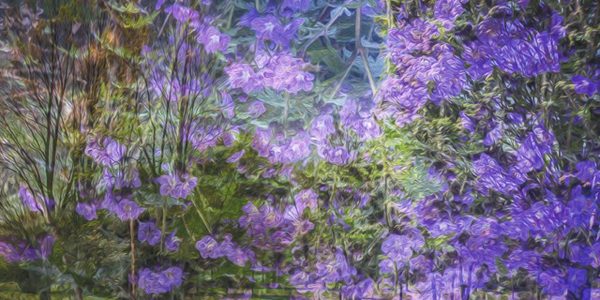
The card titles are very evocative, and very associative, very largely positive-sounding: Birthfire, Spirit Signals, Rainbow Energy, Graceful Yield. They have very positive tones, and I was wondering how did that come about? Was there a conscious decision to make them positive?
SS: You said that you had the feeling that you wanted them — or they spoke to you in a positive way.
DD: They all seem to be fairly beautiful positive images. I think that was reflected when we started to name them.
There are only two that hint at anything negative, Mist of Tears and Creative Disarray. Both of which sound beautiful. I love the idea of creative disarray, that’s pretty much how I live my life, I think.
DD: all of them could have a shadow side if you start really looking into it. It might be what’s missing in your life, Joyful Body might be what is missing, and what you need to work on. It depends on how you’re reading it, who reads it, and how deep they want to go into it.
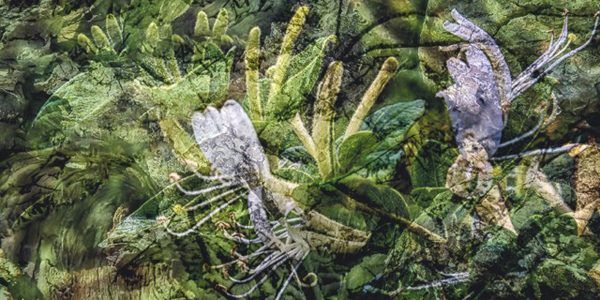
The colours on the background, these solid colours. I was wondering if there was an intent behind that or how that came about? The dark greens, the light greens, the browns —
DD: To be honest, that was the design team at Schiffer. I wanted to have a border that had room for a name. I didn’t want suits, because it wasn’t like certain certain cards have to do with water or fire or earth, so pick a colour from the card and use that as the border.
It’s just to highlight the colours and the tones already in the card. That’s very cool. Heartwords has this beautiful blue border, and red imagery, but I guess the picked out the blue from the sky behind it. It’s one of those things that diviners are always curious about, how these things come about.
DD: it wouldn’t work to just put the name on top of the image, you couldn’t read it.
No, it would have been messy.
DD: We also played with not naming them so that people would have a chance to really use their intuitive powers, but we wanted to make the deck more accessible to those people who maybe stepping into an oracle deck for the first time.
The readings that you present in the book, they’re very geared towards contemplation and doing readings for yourself. How did that come about?
SS: I don’t think we ever really discussed it.
DD: I teach people how to read cards for themselves, and using cards to find out where we are spiritually, what’s going on with us, rather than fortune-telling, so I think that was reflected in the kind of questions we asked and the spreads we did.
Your own ethic and how it comes out in the cards, your own approach to tarot emerging.
SS: It’s funny, when the tarot readers that we’ve spoken with, and even Kait, an editor, when she reviewed the deck, they tend to gravitate almost immediately towards using our deck with a tarot deck, as kind of an enlightenment or like a — the card, the middle card, that represents the person —
DD: Significator.
SS: — to get more information about that. Even when we were speaking with Chris [McClure] at Schiffer, who is the marketing representative for the cards, he’s a reader also, he said, “Well, I would definitely work with your deck and using another tarot deck.” It seems to be that kind of a thing, when a reader is reading for somebody else, that’s what they’re doing.
DD: Although we did have a friend who did some sample readings, and she did a traditional past-present-future reading only using the cards from the deck. It certainly can work that way too,
SS: It seems to be a very versatile deck, with things that I didn’t think of using in combination with a traditional tarot deck.
DD: Even when I do tarot readings, I often use three different decks, because they all have different feelings. I think that was more open as possibility in my mind.

Again, something that comes up unconsciously in the way that you create.
DD: Even the spreads. Both Susan and I have done a lot of training in shamanism, and it seemed that the names of the spreads really were very earthy, that’s what wanted to come through with this deck.
Makes sense with the Gaia Oracle titles as well, these natural images. The Mud spread, the River spread. I love the shapes of them, the Sacred Fire, how they go up in the spreads you’ve created,
DD: It was fun writing them.
SS: That was all Doris, it was her chapter.
I should ask about, how did you come up with the title for the deck?
SS: I know we were looking at some variations of Gaia, the name Gaia, but I think before that —
DD: I think it came from the book I was working on. Are you familiar with the poem “The Charge of the Goddess?”
Doreen Valiente, yes.
DD: That’s what I did for the book. I used “The Charge of the Goddess,” and I used these photographs to illustrate it, and I called that book Gaia Dreaming. Then we wanted to use Gaia in the title, and we checked online to see what already has Gaia in the title.
SS: There were quite a view.
DD: We liked “vision” because it felt like the right word for us.
With your connection to shamanism it makes a lot of sense, and with the way the images are so evocative, you can see using them for meditation or contemplation, visioning with them that way, getting deep into the cards. It’s a really great name for the deck.
Does Gaia have a personal significance for both of you?
DD: When I think of spirit or my concept of deity, it would be the Great Goddess, or Gaia. It fits in with my spiritual beliefs.
SS: For me, it all comes down to the Earth and the Mother. The Earth Mother would be a natural choice for me too. It’s also reflective of the cards.
You can find out more about Gaia’s Vision Oracle Cards at gaiasvisionoraclecards.com and on Facebook.
- See also Kait Fowlie‘s review of Gaia’s Vision Oracle Cards. (Note: Kait does not edit Susan’s work and does not know her, so Kait’s review is as impartial as we can reasonably expect.) [↩]


